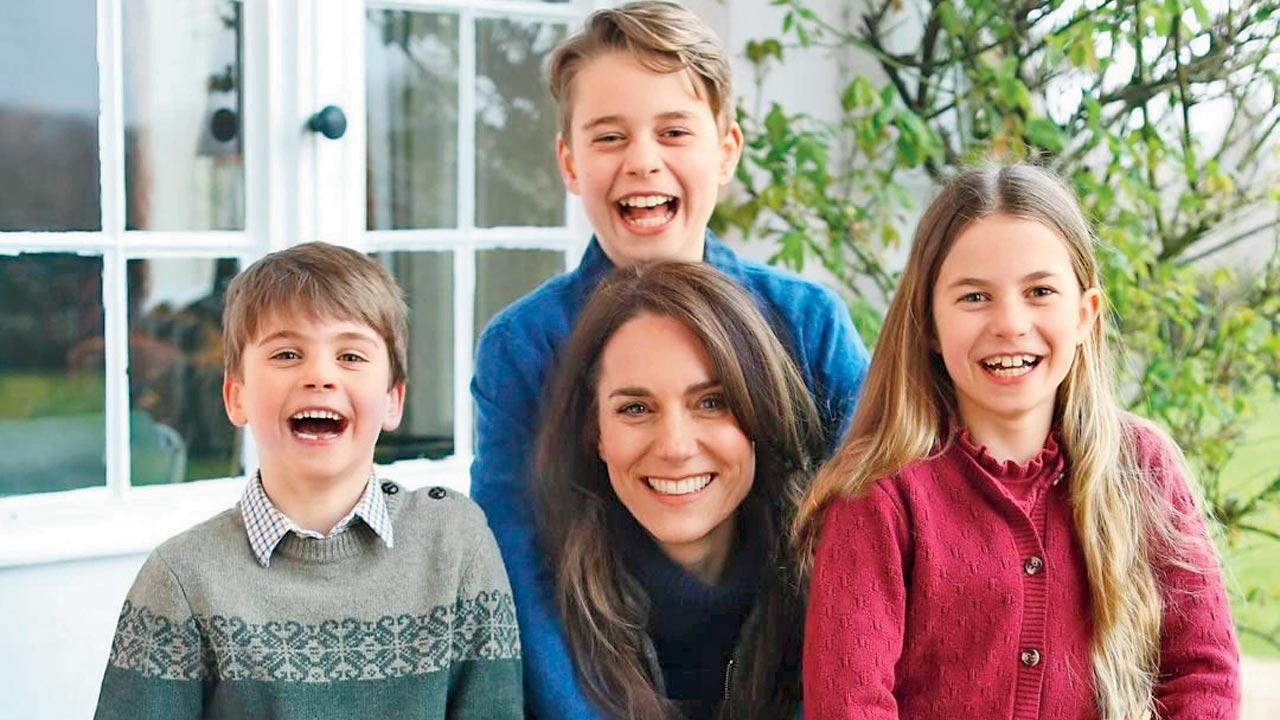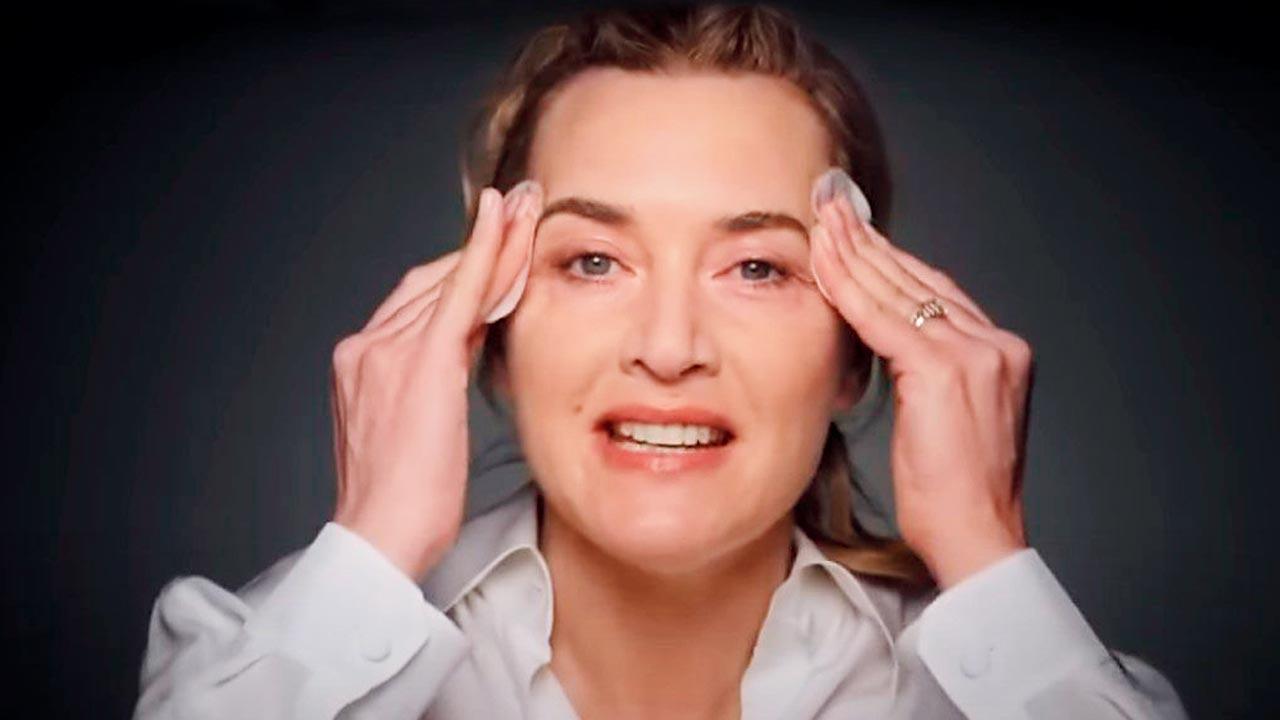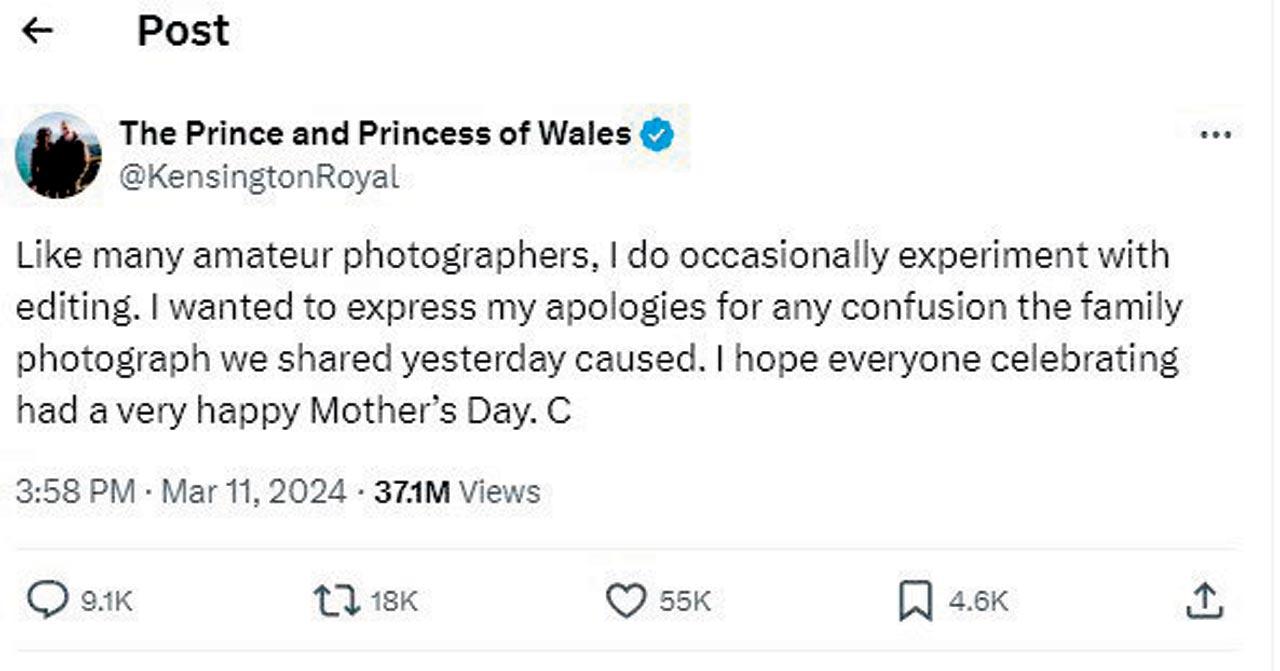In the wake of the recent scandal following a digitally altered photograph released by the British Royal Family, a photographer and an image consultant explore the ethics of photo and video manipulation

The digitally-altered image of the Duchess of Cambridge, Kate Middleton (centre) with her children was pulled up by social media platforms. Pic Courtesy/Instagram; @princeandprincessofwales
It is, by all accounts, a royal mess. And this time, the uproar surrounding the British monarchs is linked to a seemingly innocuous photograph of the Princess of Wales, Catherine (Kate) Middleton and her children. The photograph was released by Kensington Palace to honour a Mother’s Day tradition and also to quell speculation about The Princess of Wales’ recent surgery. But, the move yielded quite the opposite results. As keen observers pointed out oddities in the photograph, alleging that the image was heavily edited or worse AI generated, Middleton issued an apology admitting to have edited the photograph.
Her admission has sparked, not for the first time, a heated debate about the perils and pitfalls of editing, and when a few tweaks to a photo can compromise its integrity. Living, as we do, in an increasingly digital world where photos and videos can be FaceTuned and filtered by amateur users in a matter of mere minutes, where does one draw the line when it comes to editing?
ADVERTISEMENT
 Experts suggest that one should avoid digitally altering images to unreal standards
Experts suggest that one should avoid digitally altering images to unreal standards
A fine line
The fascination with editing and retouching is hardly recent, points out Ritesh Uttamchandani, an independent photographer. “It’s important to understand that a photograph is a truth and a lie at the same time; it is a carefully curated section of time, space and a person’s persona and behaviour. It is quite natural to want to control others’ perception of you and by deciding what you want to include or exclude in a frame, you can control the narrative to quite an extent. The tendency to curate photographs — during or after a shoot — has become even more urgent with the advent of digital cameras, which offer immediate playback,” he explains.
The urge to retouch images or videos becomes that much higher when the subject matter is of heightened interest to the public. “This was the case far before digital photography became the norm. I remember when, during a very eagerly anticipated football match, a photographer had captured a great image during a pivotal moment — however, the ball was missing from the frame. There was so much pressure to produce that perfect image, to have that a-ha moment frozen in time, that the editor used a coin to cast a shadow in such a way that it seemed as though the ball was, indeed, in the frame,” he adds.
 Greeshma Thampi and Ritesh Uttamchandani
Greeshma Thampi and Ritesh Uttamchandani
“The question today isn’t about whether photographs should be edited or not; how much the image has been edited is where the question arises,” says image consultant, Greeshma Thampi. She elaborates that slightly enhancing one’s features or body is still considered acceptable, as long as the photograph isn’t contributing towards fake or unrealistic body standards. In the latter case, the individual can lose credibility and will be perceived as ‘fake’, she points out. For her, the litmus test is to ask yourself if a popular celebrity would be trolled if they had edited their image to the same extent as you are.
Intent is everything
The boundaries of what can be considered acceptable keep shifting over time, especially for public figures, Uttamchandani says. But what matters the most is the intent of the individual taking the photograph as well as the subject. He points to a recent video featuring Hollywood actress Kate Winslet, in which she wipes off her make-up and embraces her natural self. “That video was intended to be empowering, and it did achieve that. If the intention is right, the outcome will follow suit,” he emphasises.
 Kate Winslet in the advertising campaign. Pic Courtesy/YouTube
Kate Winslet in the advertising campaign. Pic Courtesy/YouTube
Both he and Thampi emphasise the importance of adding a disclaimer to an edited image, if you don’t want to be accused of being inauthentic. Thampi foresees credible platforms implementing a vetting process for heavily manipulated images, so as to not mislead people, while Uttamchandani highlights the importance of pausing to question what you see on social media instead of taking things at face value. “The obsession with celebrities will not die down anytime soon and neither will the pressure on these public figures to perpetuate a very curated perception of themselves. Each feeds the other, and as viewers and consumers, we must acknowledge and be cautious of the way we consume,” he signs off.
 The apology note shared by the Duchess of Cambridge after the controversy over the doctored image. Pic Courtesy/X
The apology note shared by the Duchess of Cambridge after the controversy over the doctored image. Pic Courtesy/X
How to set your boundaries
Image consultant Greeshma Thampi lays down a simple checklist to keep in mind before you share edited images for public consumption:
. Do not lie that the pictures are not retouched or claim that you have not used a filter, if that isn’t the truth. The #nofilter hashtag isn’t meant to be used indiscriminately.
. Ensure that the images you share look realistic. Examine them carefully for any flagrant oddities. Credibility, once lost, is extremely challenging to build back
. Strict no-nos include blurry patches and shoddy, very obvious signs of editing.
. For social media, maintain consistency in the quality and type of images on your feed. Any glaring digressions will instantly stand out.
. Do not use images that belong to someone else without their permission. Always give credit where due.
 Subscribe today by clicking the link and stay updated with the latest news!" Click here!
Subscribe today by clicking the link and stay updated with the latest news!" Click here!








